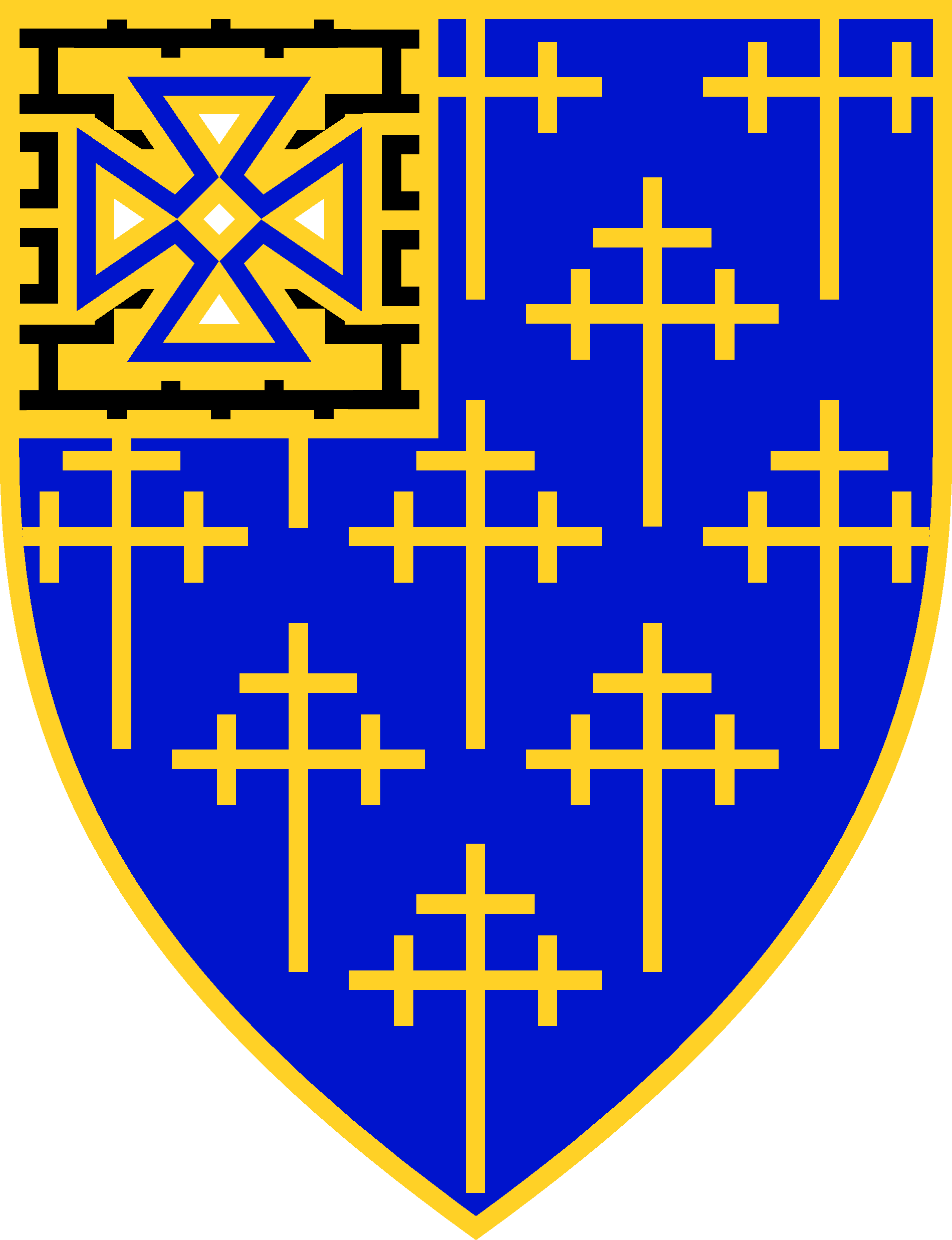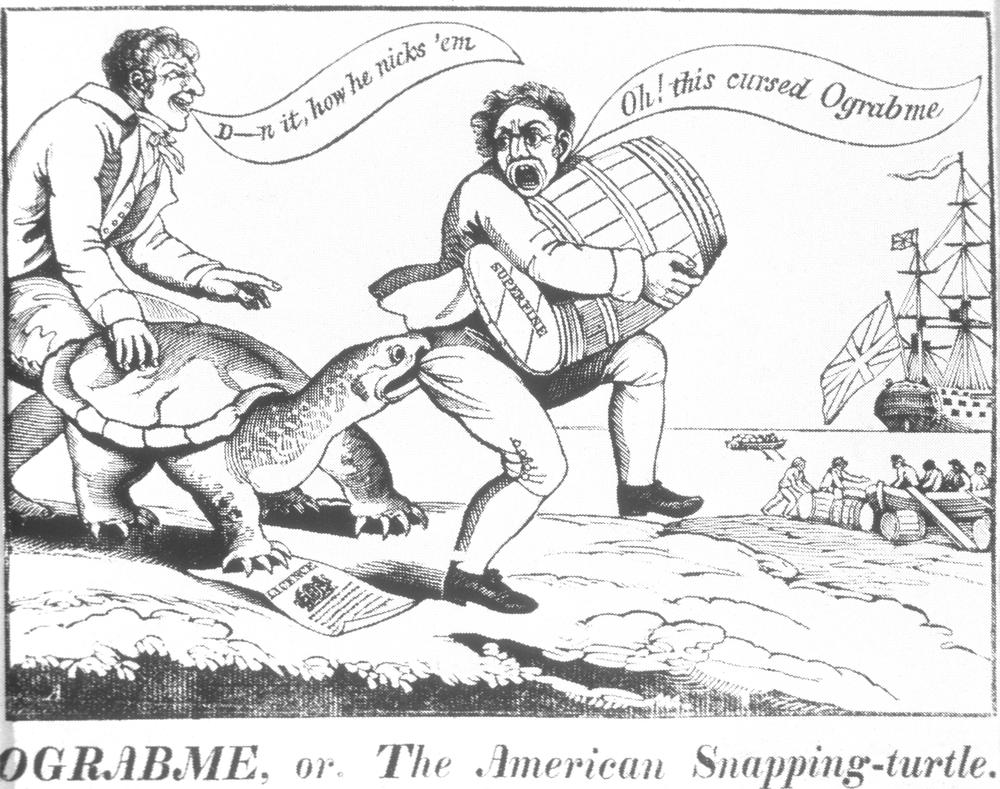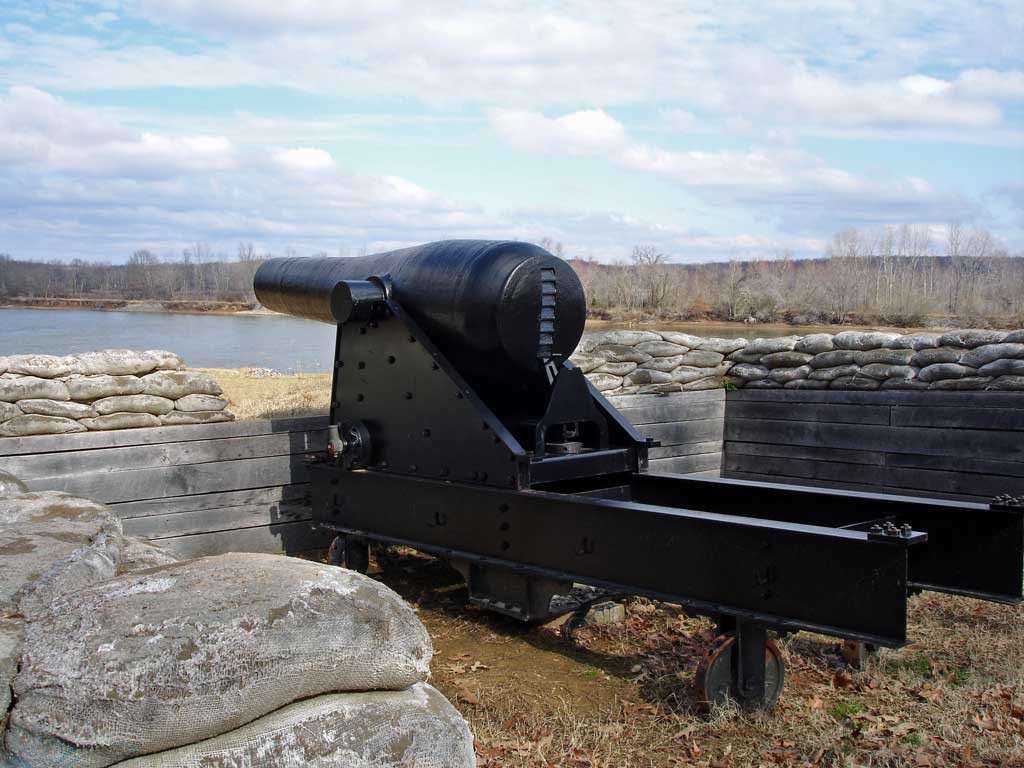|
Fort Preble
Fort Preble was a military fort in South Portland, Maine, United States, built in 1808 and progressively added to through 1906. The fort was active during all major wars from the War of 1812 through World War II. The fort was deactivated in 1950. It is now on the campus of Southern Maine Community College. Construction Secretary of War Henry Dearborn authorized construction of Fort Preble in 1808 with his son, Massachusetts Militia officer and future general Henry A. S. Dearborn, supervising the construction. The fort was named in honor of Commodore Edward Preble, who led a squadron of American warships during the Barbary Wars. Preble died in Portland in 1807 and is buried there. The initial construction at Fort Preble was part of the Second System of US fortifications. It was a star fort made of stone, brick, and sod, with 14 heavy guns including two 50-pounder (7.25-inch, 184 mm) Columbiads. The fort is described in the Secretary of War's report for December 1811 as ... [...More Info...] [...Related Items...] OR: [Wikipedia] [Google] [Baidu] |
Harbor Defenses Of Portland
The Harbor Defenses of Portland was a United States Army Coast Artillery Corps harbor defense command. It coordinated the coast defenses of Portland, Maine, the mouth of the Kennebec River, and surrounding areas from 1895 to 1950, beginning with the Endicott program. These included both coast artillery forts and underwater minefields. The command originated circa 1895 as the Portland Artillery District, was renamed Coast Defenses of Portland in 1913, and again renamed Harbor Defenses of Portland in 1925.Rinaldi, pp. 165-166Berhow, p. 430-434Stanton, pp. 455-481 Coast Defenses of the Kennebec The Kennebec coast defense command may have originated as the Kennebec Artillery District with the establishment of Endicott program minefield support facilities in the 1890s at the Civil War-era Fort Popham in Phippsburg, and deployment of mines there during the Spanish–American War. However, it is unclear from references whether the Coast Defenses of the Kennebec (as it was pr ... [...More Info...] [...Related Items...] OR: [Wikipedia] [Google] [Baidu] |
Barbary Wars
The Barbary Wars were a series of two wars fought by the United States, Sweden, and the Kingdom of Sicily against the Barbary states (including Tunis, Algiers, and Tripoli) of North Africa in the early 19th century. Sweden had been at war with the Tripolitans since 1800 and was joined by the newly independent US. The First Barbary War extended from 10 May 1801 to 10 June 1805, with the Second Barbary War lasting only three days, ending on 19 June 1815. The wars were largely a reaction to piracy carried out by the Barbary states. Since the 16th century, Muslim pirates operating out of North Africa had captured ships and even raided cities across the Mediterranean Sea. By the 19th century, pirate activity had declined, but Barbary pirates continued to demand tribute from American merchant vessels in the Mediterranean. Refusal to pay would result in the capturing of American ships and goods, and often the enslavement or ransoming of crew members. After Thomas Jefferson became p ... [...More Info...] [...Related Items...] OR: [Wikipedia] [Google] [Baidu] |
US Volunteers
United States Volunteers also known as U.S. Volunteers, U.S. Volunteer Army, or other variations of these, were military volunteers called upon during wartime to assist the United States Army but who were separate from both the Regular Army and the militia. Prior to the enactment of the Militia Act of 1903, the land forces of the United States were divided into three separate and distinctive organizations. * The Regular Army, which was the permanent military establishment of the United States in peace and war. * The Militia of the several states and territories when called into the service of the United States. * Such volunteer forces that the Congress of the United States authorized to be organized for a limited time period as an adjunct to the Regular Army in time of emergencies. Early legislation The term ''Volunteers'' was first used in the ''Act of May 28, 1789'', during the Northwest Indian War, which authorized the President of the United States to accept companies of volun ... [...More Info...] [...Related Items...] OR: [Wikipedia] [Google] [Baidu] |
Infantry
Infantry is a military specialization which engages in ground combat on foot. Infantry generally consists of light infantry, mountain infantry, motorized infantry & mechanized infantry, airborne infantry, air assault infantry, and marine infantry. Although disused in modern times, heavy infantry also commonly made up the bulk of many historic armies. Infantry, cavalry, and artillery have traditionally made up the core of the combat arms professions of various armies, with the infantry almost always comprising the largest portion of these forces. Etymology and terminology In English, use of the term ''infantry'' began about the 1570s, describing soldiers who march and fight on foot. The word derives from Middle French ''infanterie'', from older Italian (also Spanish) ''infanteria'' (foot soldiers too inexperienced for cavalry), from Latin '' īnfāns'' (without speech, newborn, foolish), from which English also gets '' infant''. The individual-soldier term ''infantry ... [...More Info...] [...Related Items...] OR: [Wikipedia] [Google] [Baidu] |
34th Infantry Regiment (United States)
The 34th Infantry Regiment (special designation "Leyte Dragons") is a Regular Army infantry regiment of the United States Army. It saw combat in World War I, in the Pacific Theater of Operations in World War II, and was the first full American regiment deployed in combat in the Korean War. The 1st and 3rd Battalions of the 34th are now basic training formations attached to the 165th Infantry Brigade at Fort Jackson, South Carolina. Other units called "34th Infantry Regiment" There was a 34th Infantry Regiment in the War of 1812, constituted on 29 January 1813 by enrolling several militia companies from Maine (then Massachusetts) into regular service. This regiment served under General George Izard on the Lake Champlain frontier. In October 1815 it was consolidated into the Regiment of Light Artillery. At the outbreak of the American Civil War, Congress increased the Regular Army by authorizing the creation of nine new, three-battalion infantry regiments. After the war, the b ... [...More Info...] [...Related Items...] OR: [Wikipedia] [Google] [Baidu] |
33rd Infantry Regiment (United States)
The 33rd Infantry Regiment was an American unit stationed in the Panama Canal Zone and Caribbean from 1916-56. Though providing troops for various other American military formations, the regiment had no battle honors of its own. History Though other American regiments in the War of 1812 and American Civil War (33d Infantry Regiment, United States Colored Troops) formed from the 1st South Carolina Colored Infantry on 8 February 1864-disbanded 31 January 1866) had the designation of 33d Infantry, they have no lineage with the most recent 33d Infantry Regiment. The 33d Infantry was activated on 6 July 1916 in accordance with War Department General Orders Number 22 dated 30 June 1916 that ordered seven new regiments to be organized; four in the Continental United States, one in the Philippine Islands ( 31st Infantry Regiment), one in Hawaii ( 32d Infantry Regiment), and one (the 33d Infantry) in the Canal Zone. Chronicled by J. Fisher/Fort Clayton C.Z. on his six-foot panorama ph ... [...More Info...] [...Related Items...] OR: [Wikipedia] [Google] [Baidu] |
21st Infantry Regiment (United States)
The 21st Infantry Regiment ("Gimlet") Is a United States Army infantry regiment. The 1st Battalion currently exists as part of 2nd Infantry Brigade Combat Team, 25th Infantry Division and the 3rd Battalion of the 1st Infantry Brigade Combat Team 11th Airborne Division. The regiment fought in World War II, the Korean War and the Vietnam War, as well as Operation Iraqi Freedom. Task Force Smith, the first American unit to see action in the Korean War, was derived from the regiment's 1st Battalion. History Civil War The 21st Infantry traces its history back to the 2nd Battalion of the 12th Infantry Regiment, formed on 3 May 1861 for the American Civil War. Companies A, B, E and G were activated at Fort Hamilton on 20 May 1862. They were sent to Harpers Ferry and on 26 May fought in a skirmish with a Confederate States Army brigade. The companies fought at the Battle of Cedar Mountain on 9 August. The companies were formed into a battalion with elements of the 8th Infantry ... [...More Info...] [...Related Items...] OR: [Wikipedia] [Google] [Baidu] |
Light Artillery (United States)
The Light Artillery Regiment was an artillery regiment which served in the United States Army from 1808 to 1821. History It was formed in 1808 and consisted of 10 companies.Haskin, William L ''U.S. Army Center of Military History''. Accessed 19 November 2018. It served in the War of 1812 and fought in the following battles - *Battle of Queenston Heights, Oct. 13, 1812 * Capture of York (now Toronto), April 27, 1813 *Siege of Fort Meigs, Ohio, May 5, 1813 *Battle of Fort George, May 27, 1813 *Battle of Stony Creek, June 6, 1813 * Battle of Chrystler's Fields, Nov. 11, 1813 *Defense of Fort Oswego, New York, May 5 and 6, 1814 *Battle of Plattsburgh, New York, Sept. 11, 1814 After the War of 1812, the companies of the Light Artillery Regiment served mostly at coastal fortifications. In 1821 the Light Artillery Regiment was consolidated with the Corps of Artillery to form four artillery regiments with 9 companies each. Of the regiments 10 companies, five (A, B, C, D and E) w ... [...More Info...] [...Related Items...] OR: [Wikipedia] [Google] [Baidu] |
James Madison
James Madison Jr. (March 16, 1751June 28, 1836) was an American statesman, diplomat, and Founding Father. He served as the fourth president of the United States from 1809 to 1817. Madison is hailed as the "Father of the Constitution" for his pivotal role in drafting and promoting the Constitution of the United States and the Bill of Rights. Madison was born into a prominent slave-owning planter family in Virginia. He served as a member of the Virginia House of Delegates and the Continental Congress during and after the American Revolutionary War. Unsatisfied with the weak national government established by the Articles of Confederation, he helped organize the Constitutional Convention, which produced a new constitution. Madison's Virginia Plan was the basis for the Convention's deliberations, and he was an influential voice at the convention. He became one of the leaders in the movement to ratify the Constitution, and joined Alexander Hamilton and John Jay in writing '' ... [...More Info...] [...Related Items...] OR: [Wikipedia] [Google] [Baidu] |
Embargo Act
The Embargo Act of 1807 was a general trade embargo on all foreign nations that was enacted by the United States Congress. As a successor or replacement law for the 1806 Non-importation Act and passed as the Napoleonic Wars continued, it represented an escalation of attempts to coerce Britain to stop any impressment of American sailors and to respect American sovereignty and neutrality but also attempted to pressure France and other nations in the pursuit of general diplomatic and economic leverage. In the first decade of the 19th century, American shipping grew. During the Napoleonic Wars, rival nations Britain and France targeted neutral American shipping as a means to disrupt the trade of the other nation. American merchantmen who were trading with "enemy nations" were seized as contraband of war by European navies. The British Royal Navy had impressed American sailors who had either been British-born or previously serving on British ships, even if they now claimed to be ... [...More Info...] [...Related Items...] OR: [Wikipedia] [Google] [Baidu] |
Fort Scammell
House Island is a private island in Portland Harbor in Casco Bay, Maine, United States. It is part of the City of Portland. The island is accessible only by boat. Public access is prohibited, except for an on-request tour sanctioned by the island's owners. House Island includes three buildings on the east side and Fort Scammell on the west side. The buildings are used as vacation rentals and other summer residences. The island's name derives from the site of an early European house, believed that built by Capt. Christopher Levett, an English explorer of the region. The island sold for $5.35m in 2022. Fort Scammell Henry A. S. Dearborn, an officer of the Massachusetts Militia and a future general, built Fort Scammell on the island in 1808 as part of the national second system of fortifications. It was named after Alexander Scammell, Adjutant-General of the Continental Army during the American Revolutionary War, who was killed in action during the Battle of Yorktown. (The midd ... [...More Info...] [...Related Items...] OR: [Wikipedia] [Google] [Baidu] |
Columbiad
The columbiad was a large-caliber, smoothbore, muzzle-loading cannon able to fire heavy projectiles at both high and low trajectory, trajectories. This feature enabled the columbiad to fire solid Round shot, shot or Shell (projectile), shell to long range of a projectile, ranges, making it an excellent seacoast defense weapon for its day. Invented by Colonel George Bomford, United States Army, in 1811, columbiads were used in seacoast defense in the United States, United States seacoast defense from the War of 1812 until the early years of the 20th century. Very few columbiads were used outside of the U.S. and Confederate Armies; nevertheless, the columbiad is considered by some as the inspiration for the later shell-only Paixhans gun, cannons developed by Frenchman Henri-Joseph Paixhans some 30 years later. History The first columbiads produced in 1811 had a diameter bore and fired a fifty-pound projectile. Although some Seacoast defense in the United States, Second System ... [...More Info...] [...Related Items...] OR: [Wikipedia] [Google] [Baidu] |








